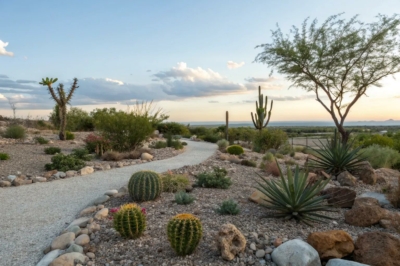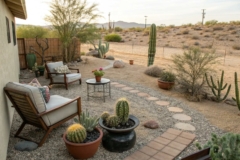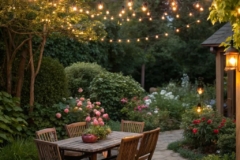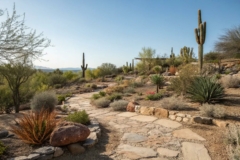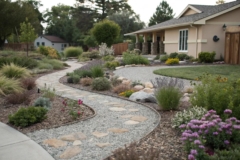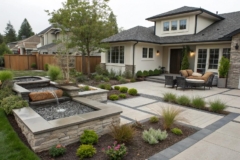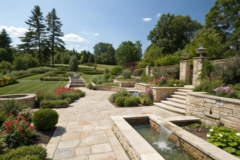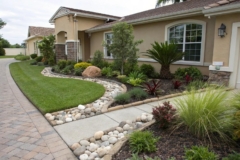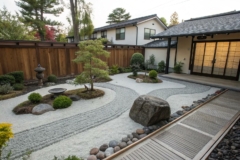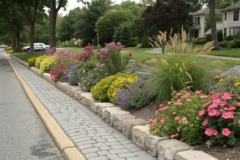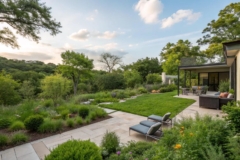1. Dry Creek Bed
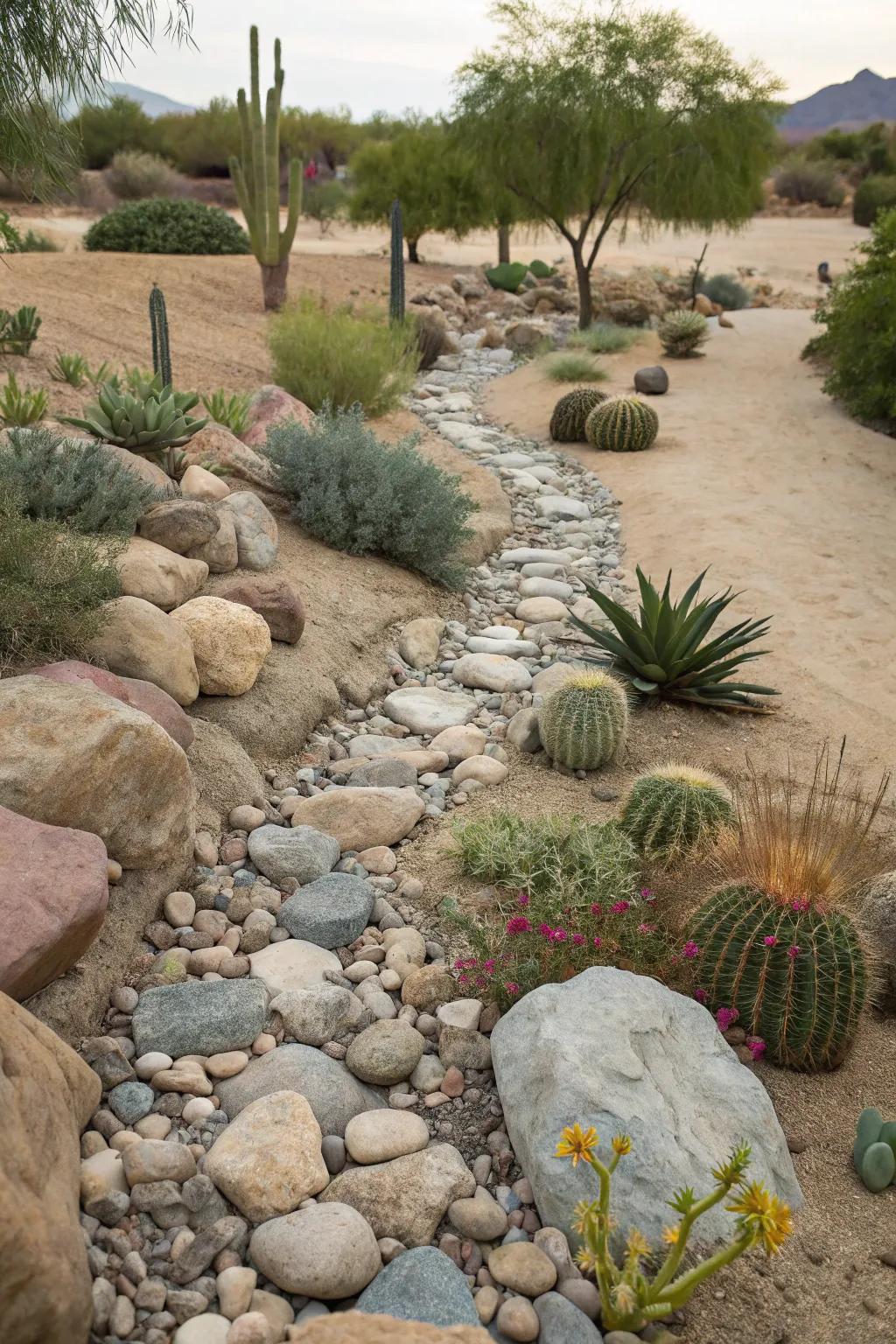
A dry creek bed can add visual interest and aid in drainage. I’ve used this design to simulate a natural water flow, complete with stones and drought-tolerant plants.
You might give these a try:
- Decorative River Rocks: Enhance your dry creek bed with these natural stones for a realistic and rustic appeal.
- Drought-Tolerant Plants: Add vibrant greenery to your landscape with easy-care drought-tolerant plants. Perfect for dry climates!
- Landscape Fabric: Prevent weed growth while maintaining soil moisture with this durable landscape fabric.
2. Focus on Texture and Form
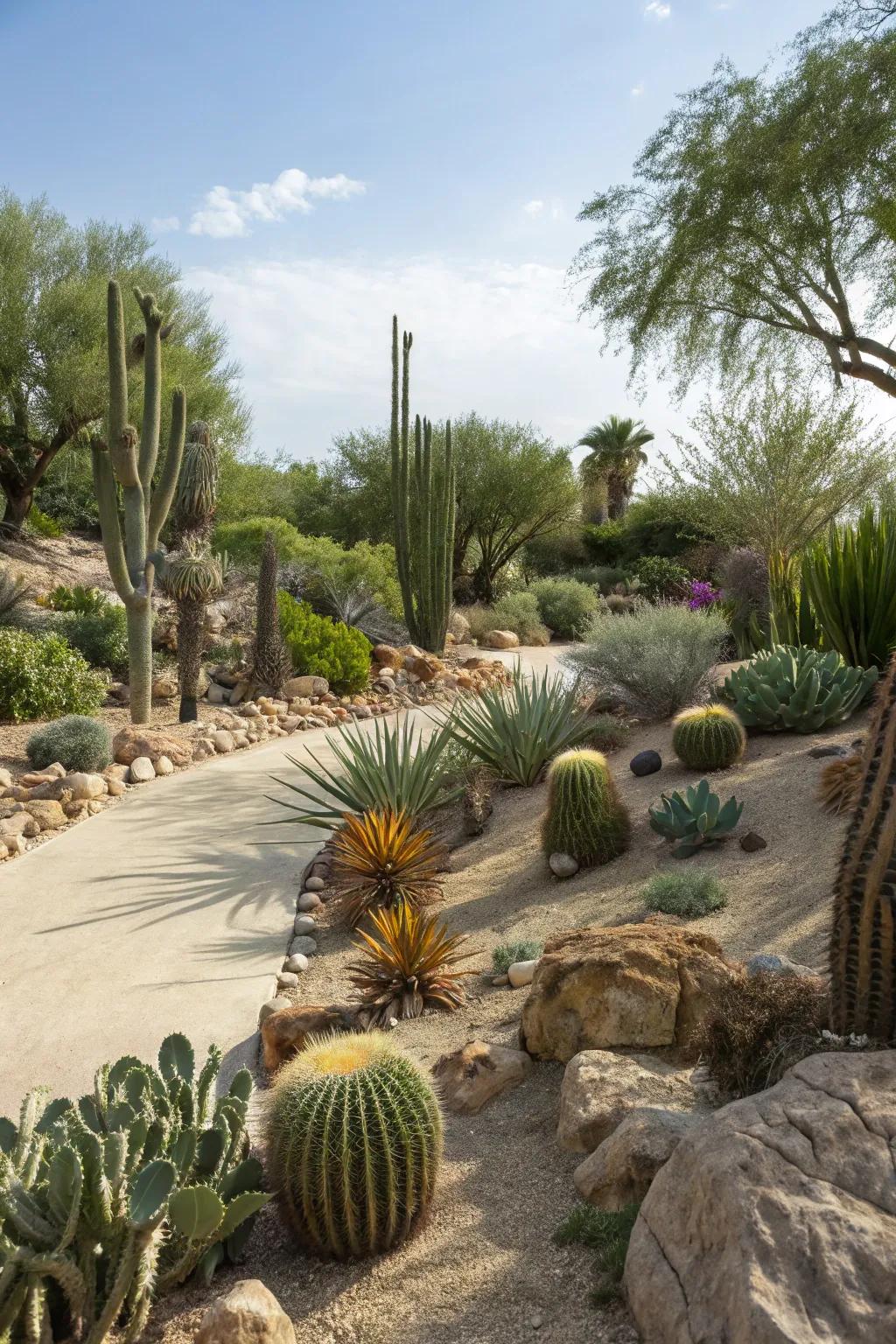
Combining different textures and forms can elevate your landscape’s design. I’ve mixed various plant shapes and rock textures to create an engaging visual experience.
Products that could assist:
- Assorted Decorative Pebbles: Enhance your garden with decorative pebbles for a unique texture and natural look.
- Succulent Plant Varieties: Explore diverse succulent varieties to add striking form and texture to your landscape design.
- Cactus Garden Set: Create a bold visual impact with a selection of easy-to-maintain cactus plants.
3. Experiment with Gravel Sizes
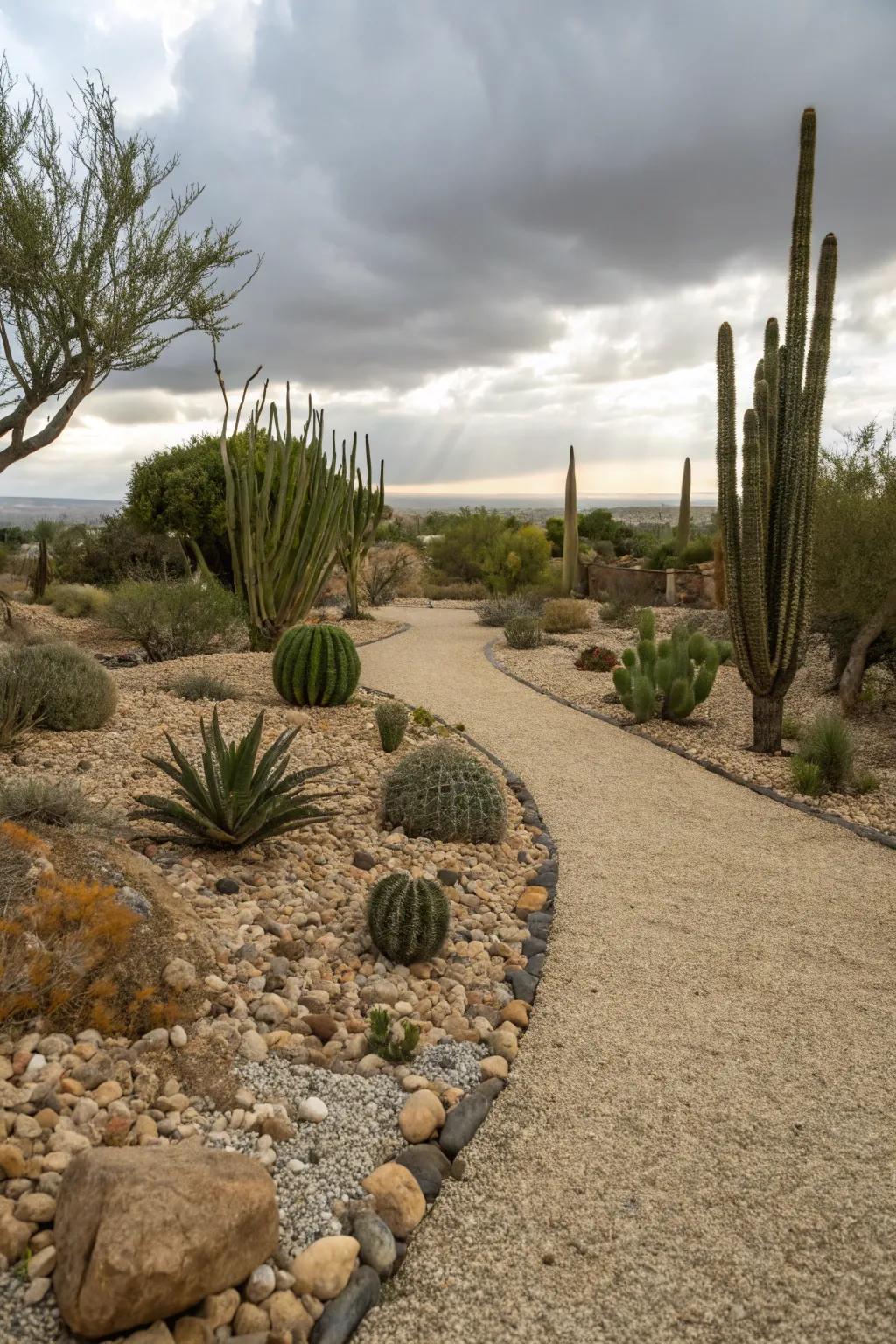
Playing with gravel sizes can add depth. I enjoy combining large and small gravel to define areas and add interest.
Maybe worth checking out:
- Decorative Landscape Gravel Mix: Enhance your garden’s aesthetic with varied gravel sizes for depth and interest.
- Small Pea Gravel Stones: Use small pea gravel stones to outline pathways or accent planting areas beautifully.
- Large River Rock Stones: Define your landscape with large river rocks for a bold, natural look.
4. Gravel and Rocks for Ground Cover
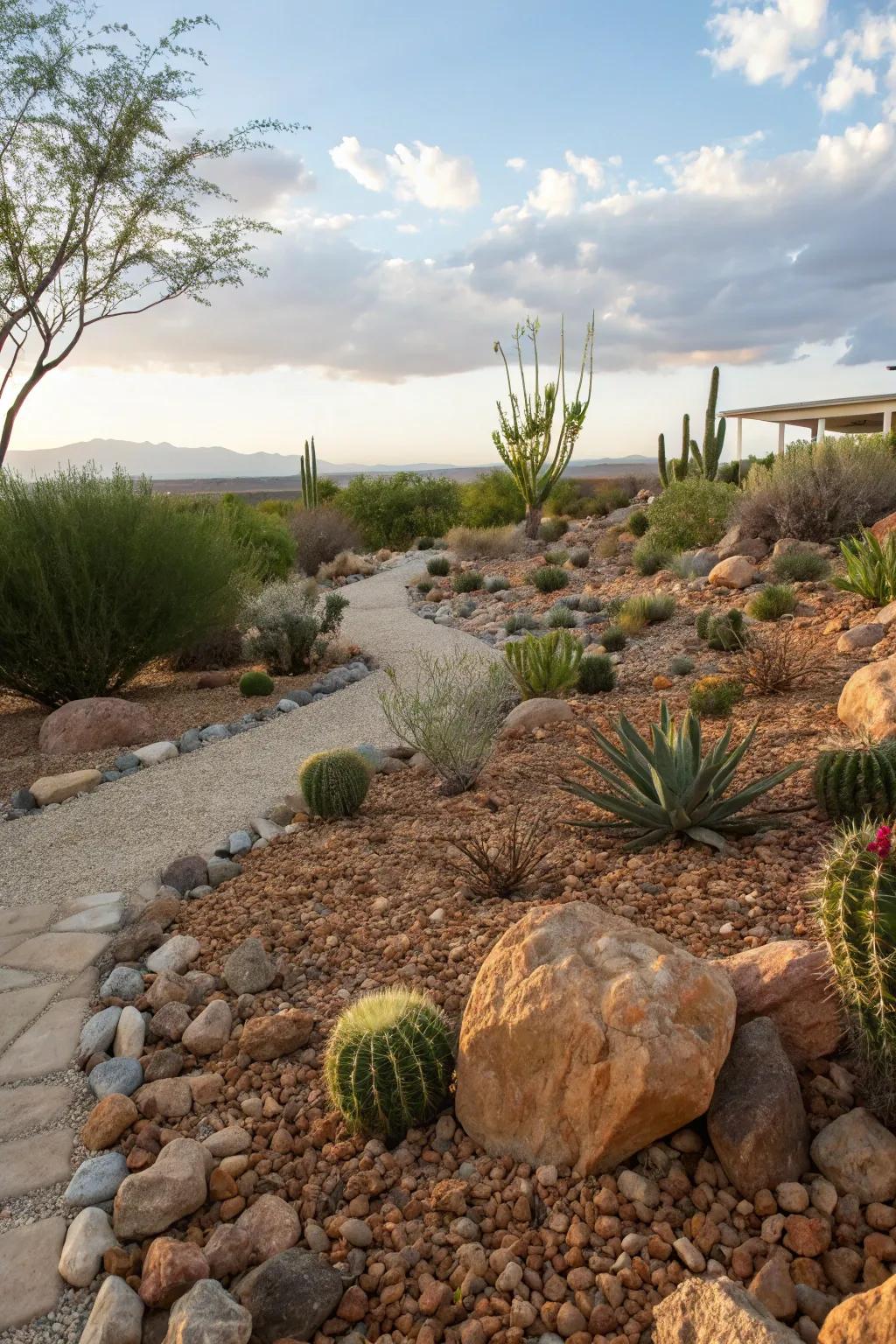
Using gravel and rocks is one of the simplest ways to create a stunning desert landscape on a budget. In my own garden, I’ve used them to cover large areas, reducing the need for expensive plants and maintenance.
Items that may come in handy:
- Desert Landscaping Gravel Mix: Transform your garden with a natural look using versatile and durable gravel mix.
- Decorative River Rocks: Enhance pathways and garden beds with smooth, colorful river rocks for a stunning effect.
- Large Landscaping Boulders: Add visual interest and natural beauty with these striking large boulders for your landscape.
5. Create a Focal Area
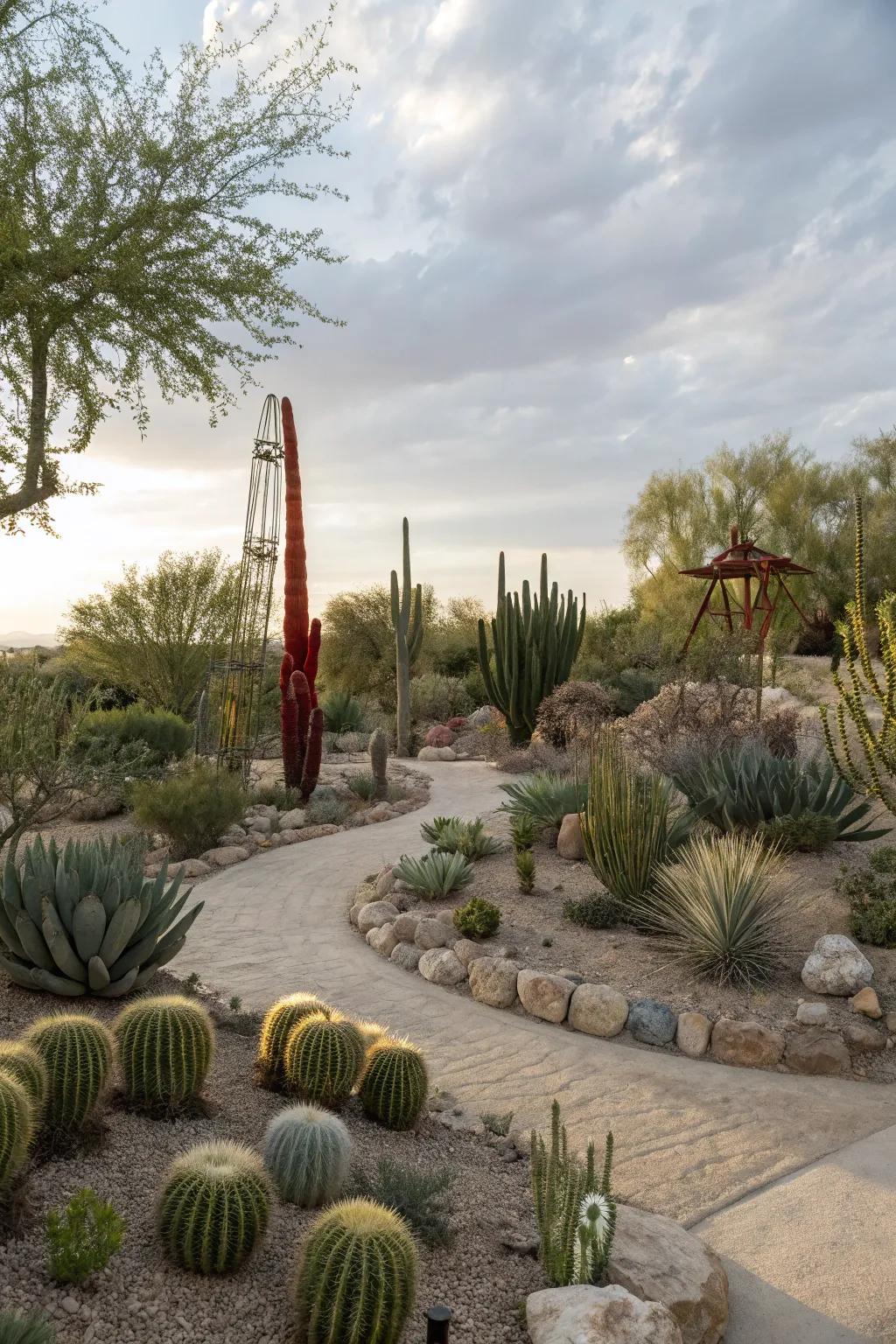
Designate a focal area to draw attention. I’ve chosen a spot with a unique plant arrangement and art pieces to captivate visitors.
These products might help:
- Decorative Metal Garden Sculpture: Enhance your garden’s charm with a striking metal sculpture for a stunning focal point.
- Outdoor Solar Garden Lights: Illuminate your focal area effortlessly with energy-efficient solar garden lights for enchanting evenings.
- Cactus and Succulent Plant Set: Add diversity and exotic beauty to your landscape with a unique cactus and succulent set.
6. Add a Shade Structure
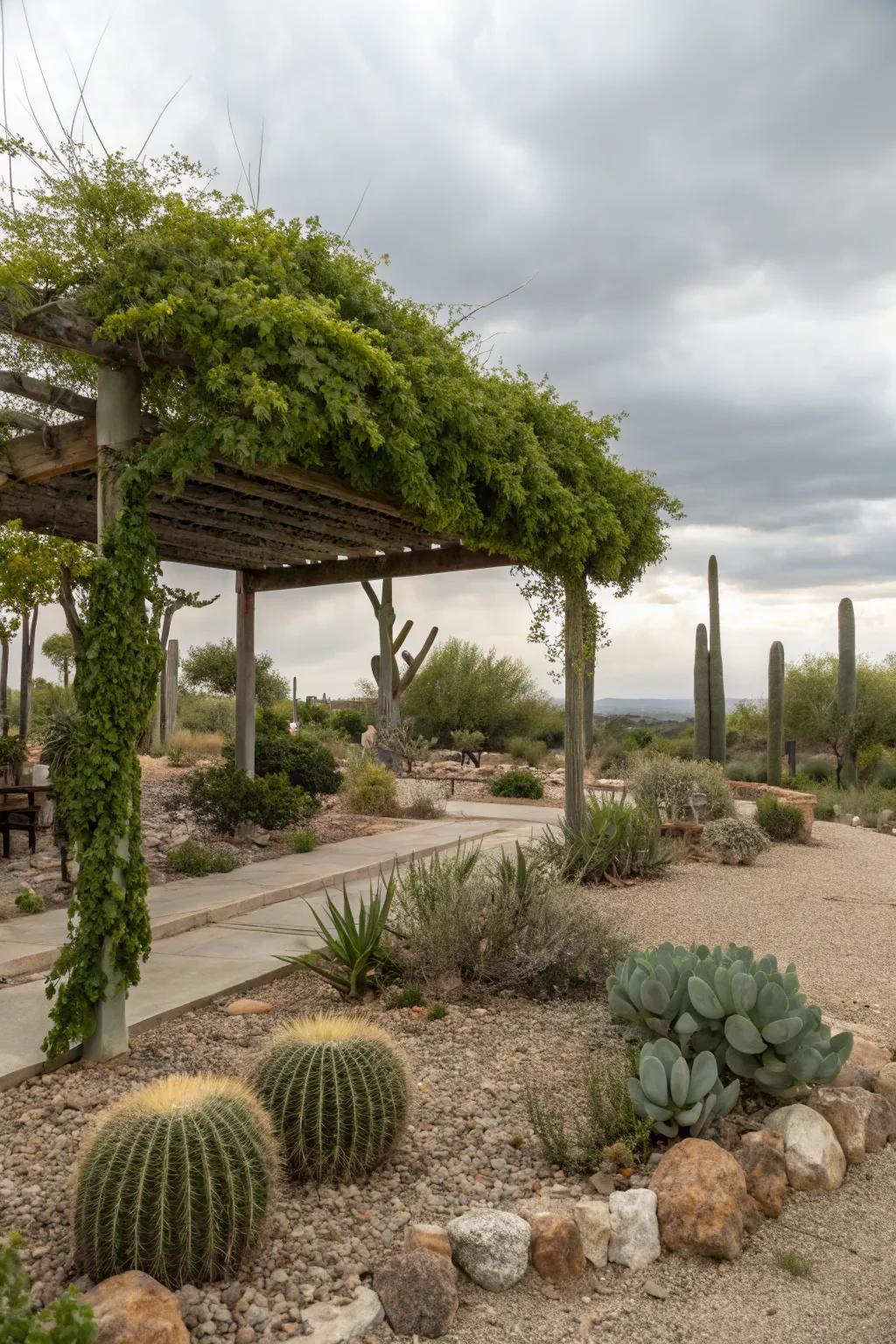
A shade structure can make your garden more usable during hot days. I’ve added a pergola to my space, creating a perfect spot for relaxation.
Some handy options:
- Outdoor Pergola Kit: Transform your garden space with an elegant pergola for added shade and comfort.
- Sun Shade Sail: Enhance your outdoor area with a sun shade sail for stylish sun protection.
- Garden Climbing Plants: Add greenery to your pergola with easy-care climbing plants for a natural touch.
7. Raised Beds and Planters
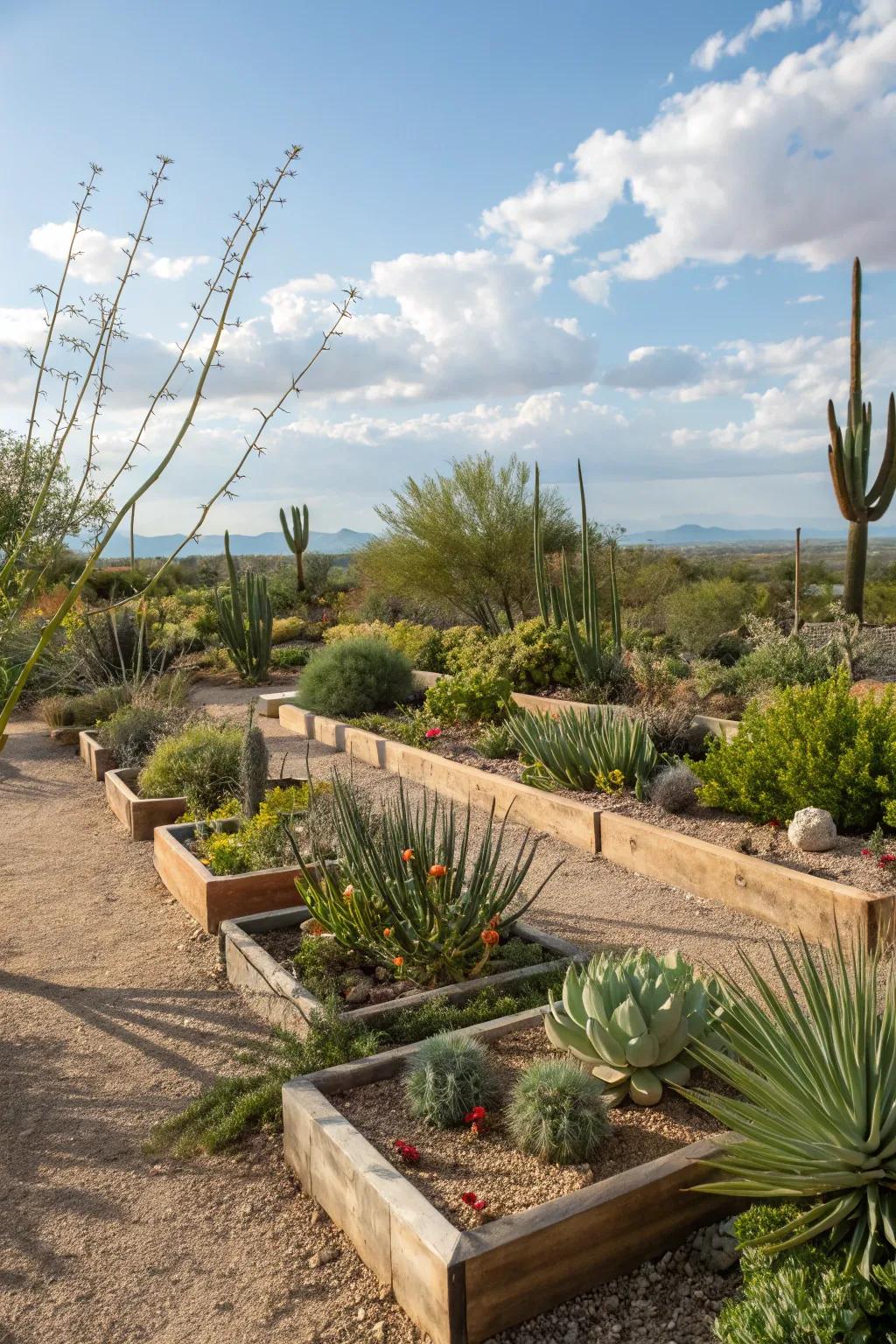
Raised beds and planters are perfect for adding layers and dimension. I love using them to elevate certain plants, creating a more dynamic and interesting garden layout.
Some ideas to consider:
- Wooden Raised Garden Bed Kit: Transform your garden’s layout by elevating plants with this sturdy wooden raised bed kit.
- Tiered Planter with Integrated Drip Irrigation: Enhance your desert landscape with a tiered planter that optimizes space and watering efficiency.
- Modular Metal Planter Box: Customize your garden design with versatile modular metal planter boxes for a sleek, modern look.
8. Succulents and Cacti
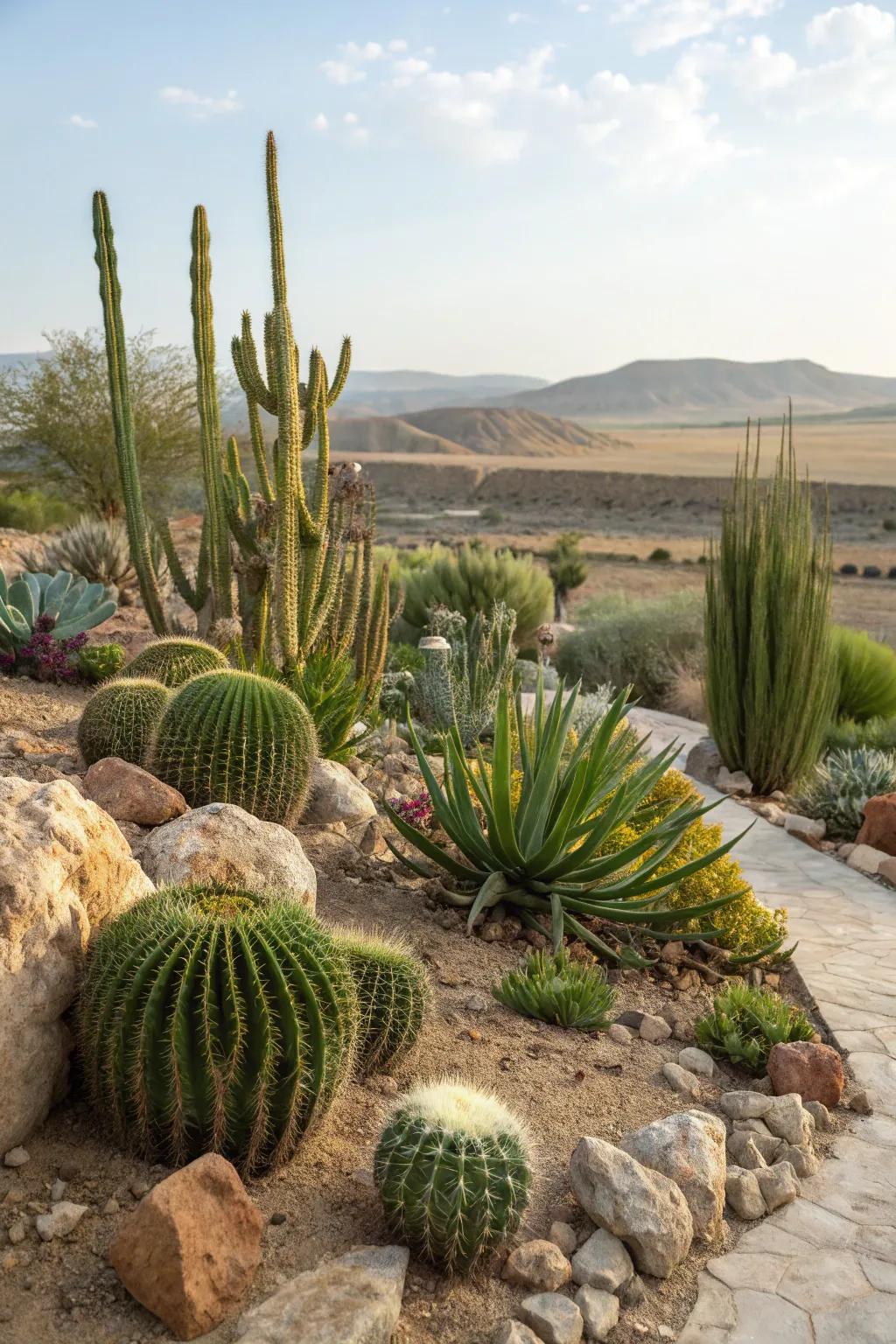
Succulents and cacti are not only drought-resistant but also incredibly stylish. I’ve filled pots and garden beds with these beauties, giving my yard a vibrant yet low-maintenance touch.
May just do the trick:
- Assorted Potted Succulents: Enhance your garden with easy-care succulents. Perfect for adding variety and color.
- Cactus Plant Variety Pack: Discover a stunning mix of cacti to create a vibrant desert landscape effortlessly.
- Decorative Garden Rocks: Add texture to your cactus garden with these charming, natural decorative rocks.
9. Incorporate a Water Feature
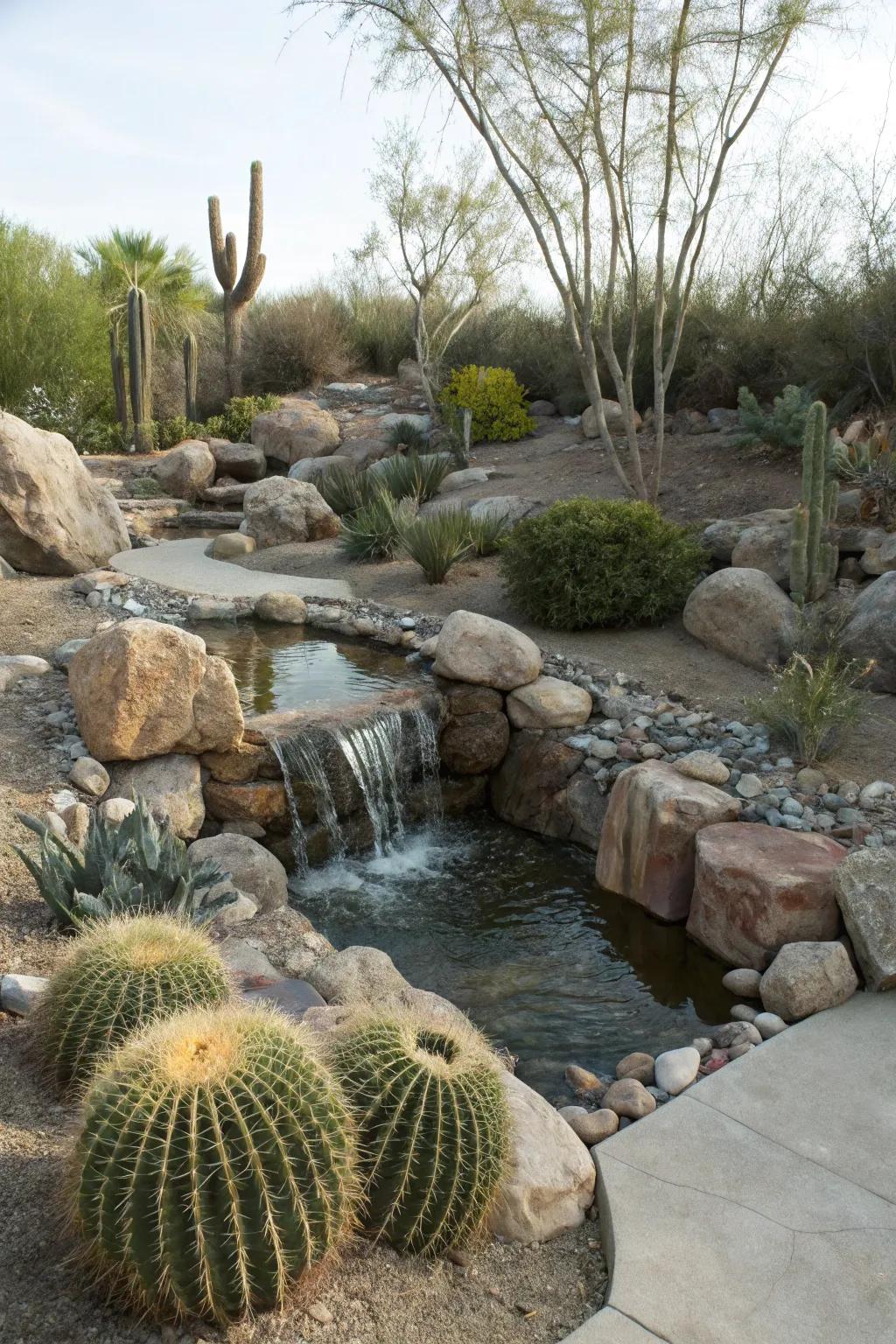
A small water feature can add tranquility. I’ve installed a simple fountain that attracts birds, adding life to my garden.
A few helpful options:
- Outdoor Solar Water Fountain: Enhance your garden with a solar-powered fountain and enjoy the soothing sound of water.
- Small Rock Waterfall Kit: Create a natural waterfall effect in your garden with this easy-to-install rock waterfall kit.
- Ceramic Bird Bath Fountain: Attract birds and add charm to your garden with this elegant ceramic bird bath fountain.
10. Use Potted Plants
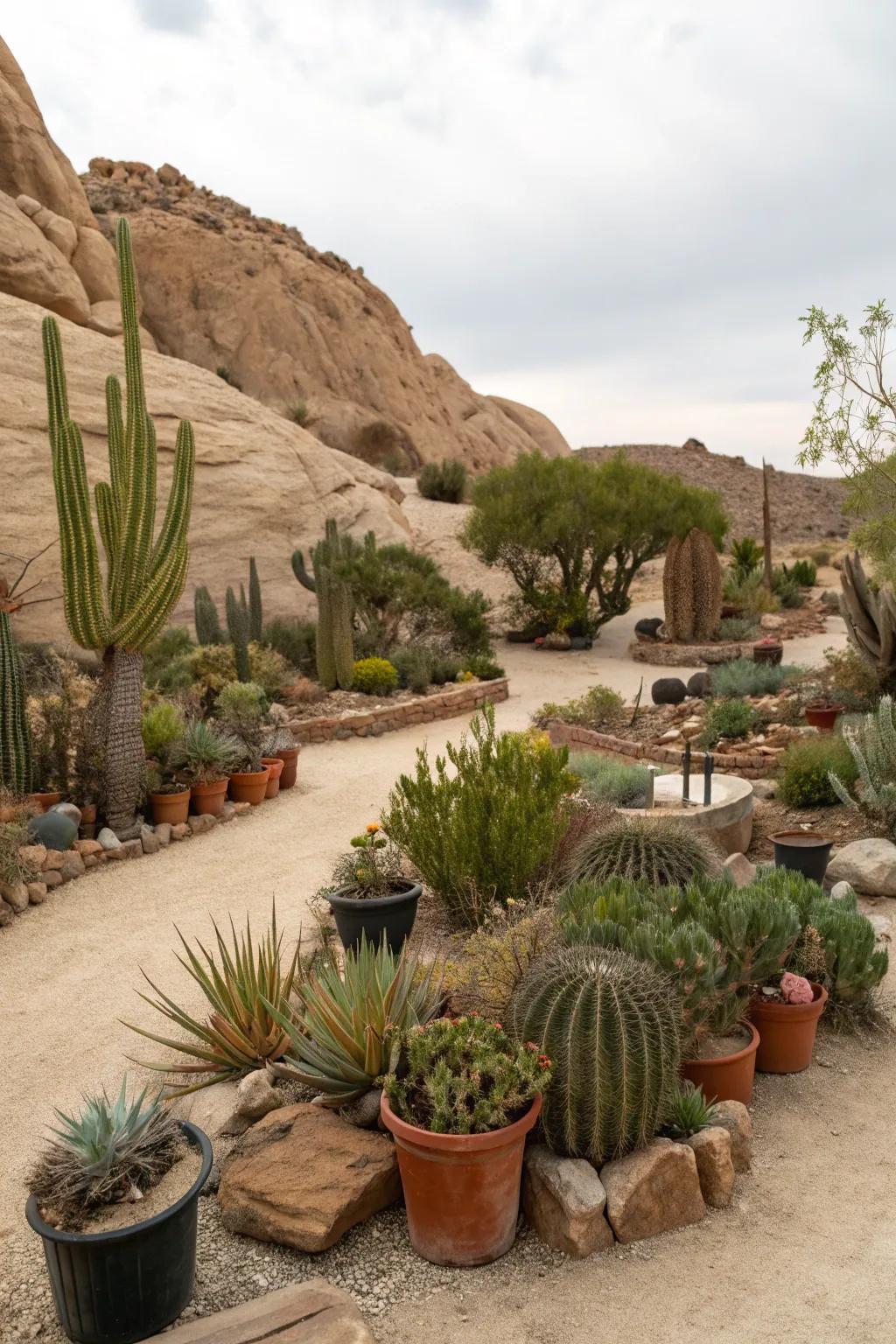
Potted plants offer flexibility and style. I love rearranging them for a fresh look whenever I feel like a change.
Might be a good match:
- Terracotta Pots: Enhance your garden’s desert charm with durable terracotta pots perfect for arid climates.
- Cactus Soil Mix: Ensure healthy growth by using specialized cactus soil mix for optimal drainage and aeration.
- Succulent Pot Pack: Add variety with a set of succulent pots, ideal for easy desert landscape organization.
11. Decorative Boulders
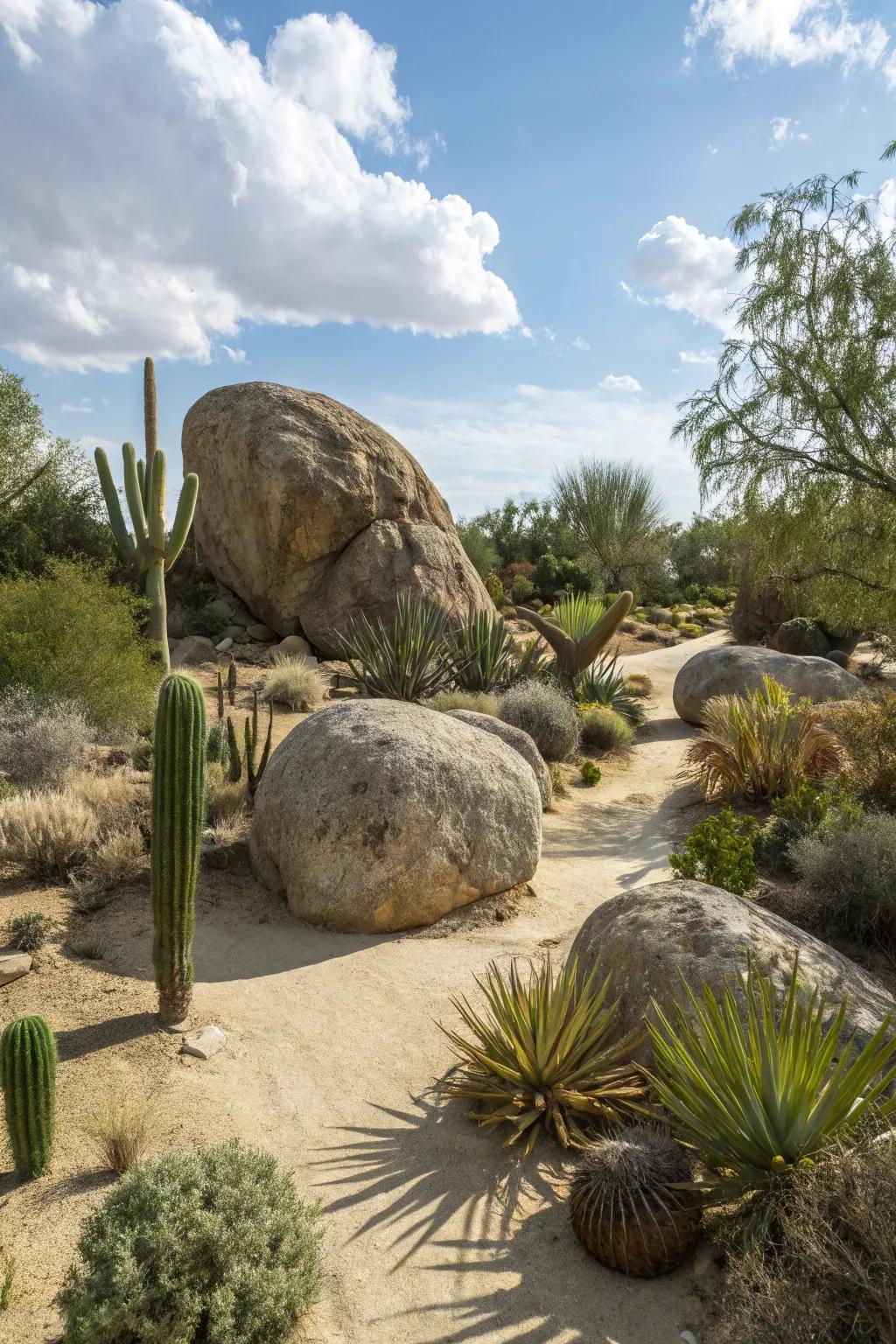
Adding decorative boulders can bring depth and interest to your landscape. I enjoy placing them as focal points, which naturally draw the eye and enhance the garden’s character.
A few choices to try:
- Artificial Landscaping Boulders: Enhance your garden with lightweight, realistic boulders that add depth and character instantly.
- Natural Rocks for Garden: Add natural charm to your landscape with varied-sized rocks, perfect for creating focal points.
- Resin Hollow Landscape Boulders: Use these durable resin boulders to creatively disguise landscape and hardscape components seamlessly.
12. Create a Rock Garden
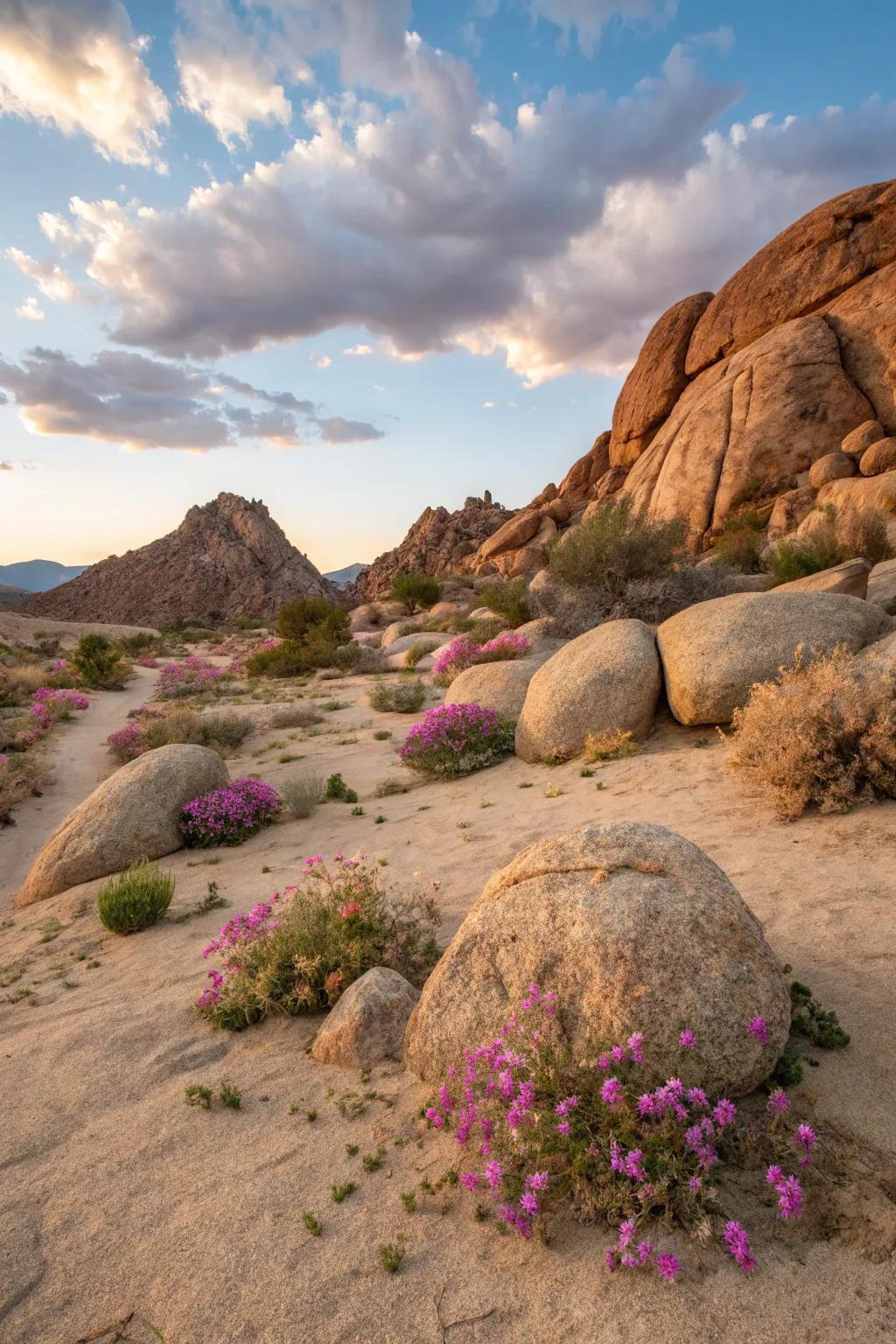
A rock garden can transform any dull corner into a visual masterpiece. I love arranging boulders and pebbles to mimic a natural desert scene, adding a few strategically placed plants for color.
Give these a look:
- Landscape Boulders: Transform your garden with natural boulders to create a stunning desert look effortlessly.
- Decorative Pebbles and Gravel: Enhance your rock garden’s texture with decorative pebbles for a polished desert scene.
- Drought-Resistant Plants: Add vibrant color with drought-resistant plants perfect for a sustainable desert garden.
13. Pathways with Stones or Gravel
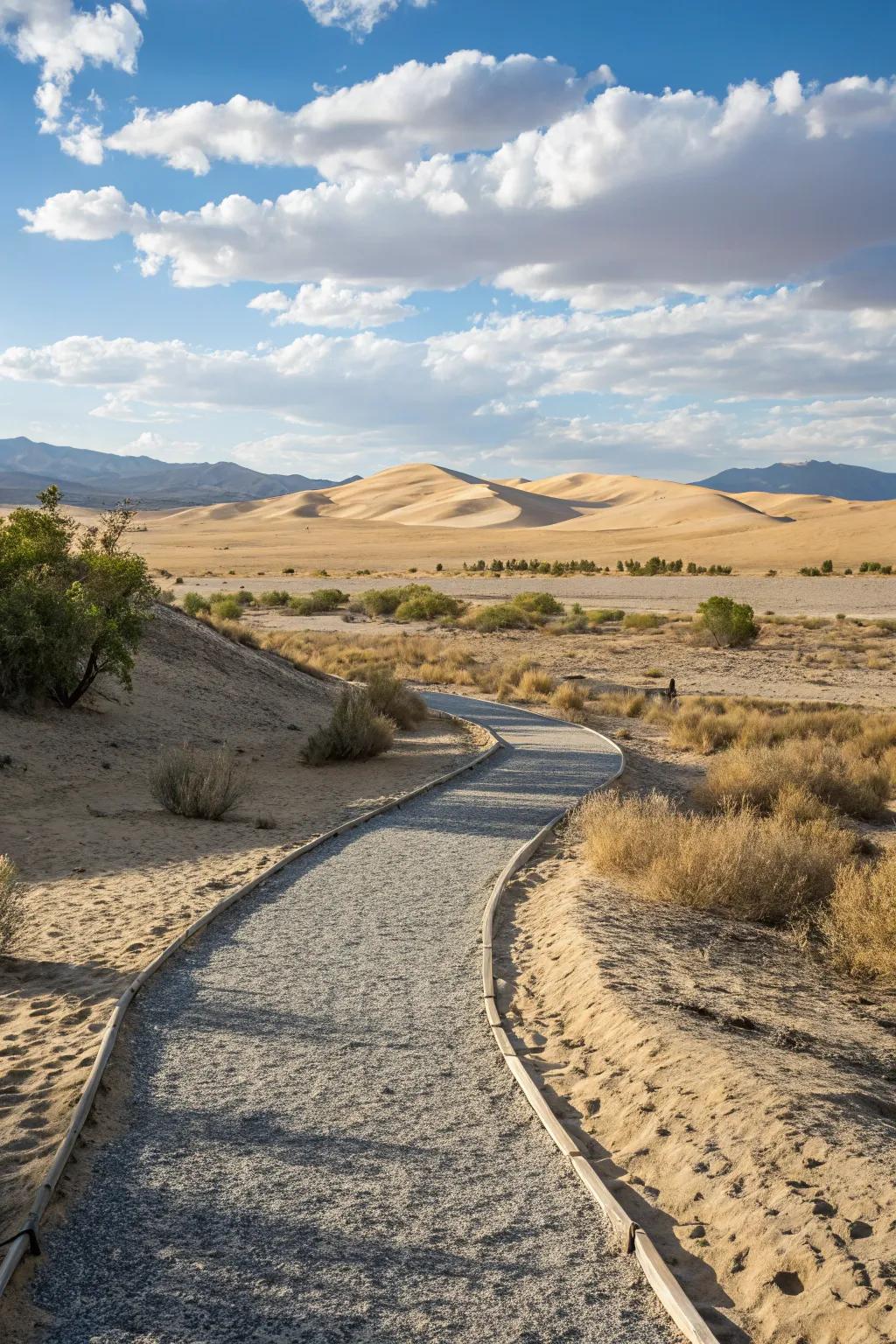
Define your space with stone or gravel pathways. In my yard, I’ve used these to guide foot traffic and add structure, making every step an experience.
These products might be useful:
- Decorative Garden Stones: Enhance your pathway’s aesthetic with elegant stones, making every step feel special.
- Landscaping Gravel: Create a durable pathway with premium gravel, guiding foot traffic effortlessly.
- Garden Edging Border: Define your garden path with edging borders, adding structure and appeal.
14. Artificial Turf
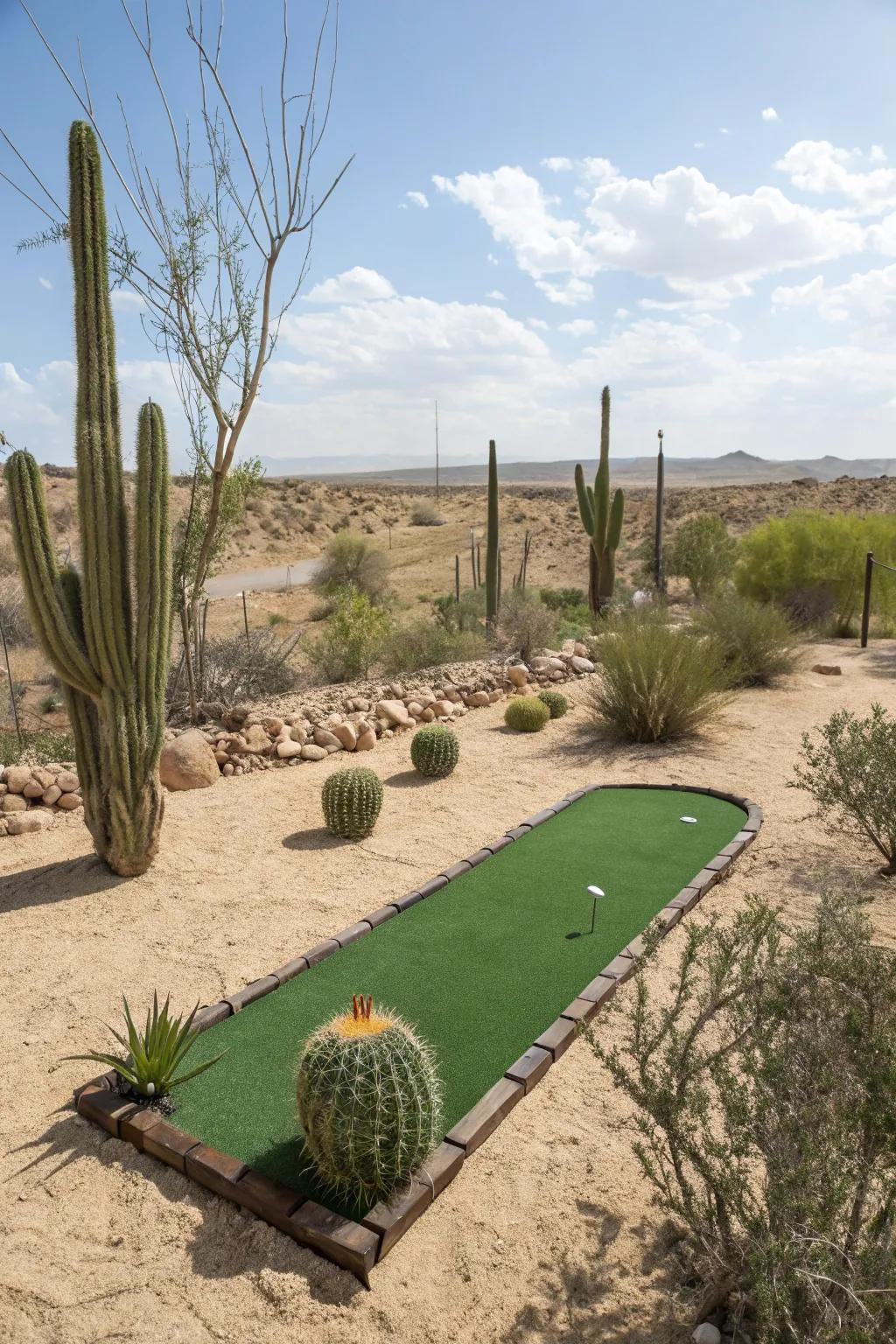
For a touch of green without the upkeep, consider artificial turf. In my experience, it provides a lush look year-round without the hassle of watering or mowing.
Explore these options:
- Artificial Grass Roll: Enhance your yard with easy-to-install, realistic artificial grass for a year-round green look.
- Landscape Fabric Stakes: Secure your turf effectively with durable stakes, ensuring stability and preventing movement.
- Artificial Grass Cleaner: Maintain the freshness of your artificial turf with a specialized cleaner that removes dirt and odors.
15. Low-Water Plants

Incorporate a variety of low-water plants to minimize maintenance. I’ve found that mixing shrubs and grasses with succulents offers a rich tapestry of textures.
Possibly handy products:
- Desert Shrub Seeds: Enhance your desert landscape with hardy shrub seeds and enjoy low maintenance greenery.
- Drought-Tolerant Grass Mix: Plant a drought-resistant grass mix for an easy-care addition to your desert garden.
- Succulent Plant Variety Pack: Curate a vibrant array of succulents to add texture and charm to your landscape.
16. Native Plant Selection
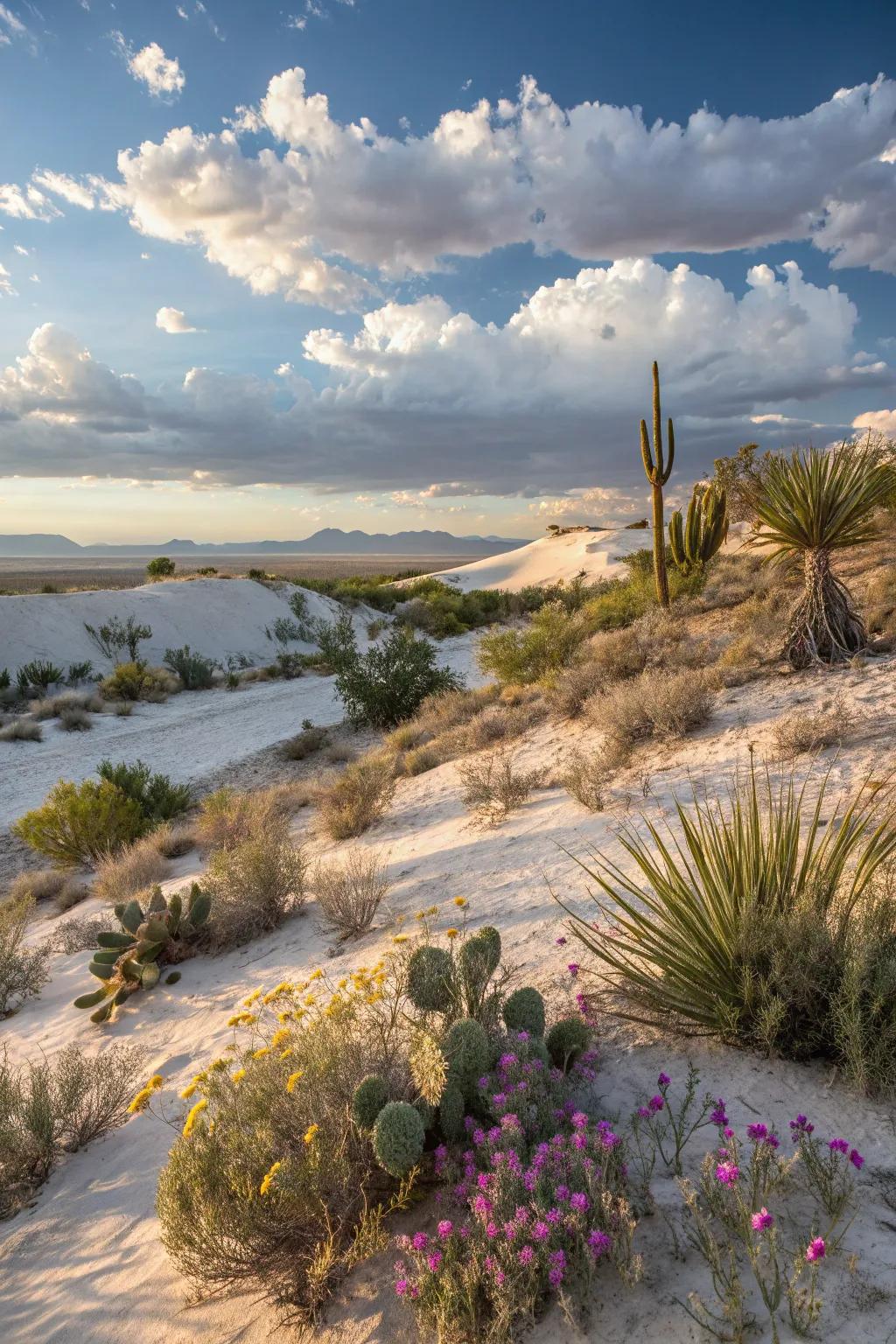
Opt for native plants to ensure resilience and beauty. I’ve found that they thrive with minimal effort, offering a sustainable and vibrant garden.
A few suggestions:
- Desert Succulent Plant Kit: Discover easy-care succulents for vibrant landscaping that flourishes in desert environments effortlessly.
- Cactus Seed Variety Pack: Cultivate a diverse cactus collection, ideal for adding texture and interest to your desert garden.
- Drought Resistant Wildflower Seeds: Enhance your landscape with colorful wildflowers that thrive in dry desert conditions with minimal care.
17. Limited Color Palette
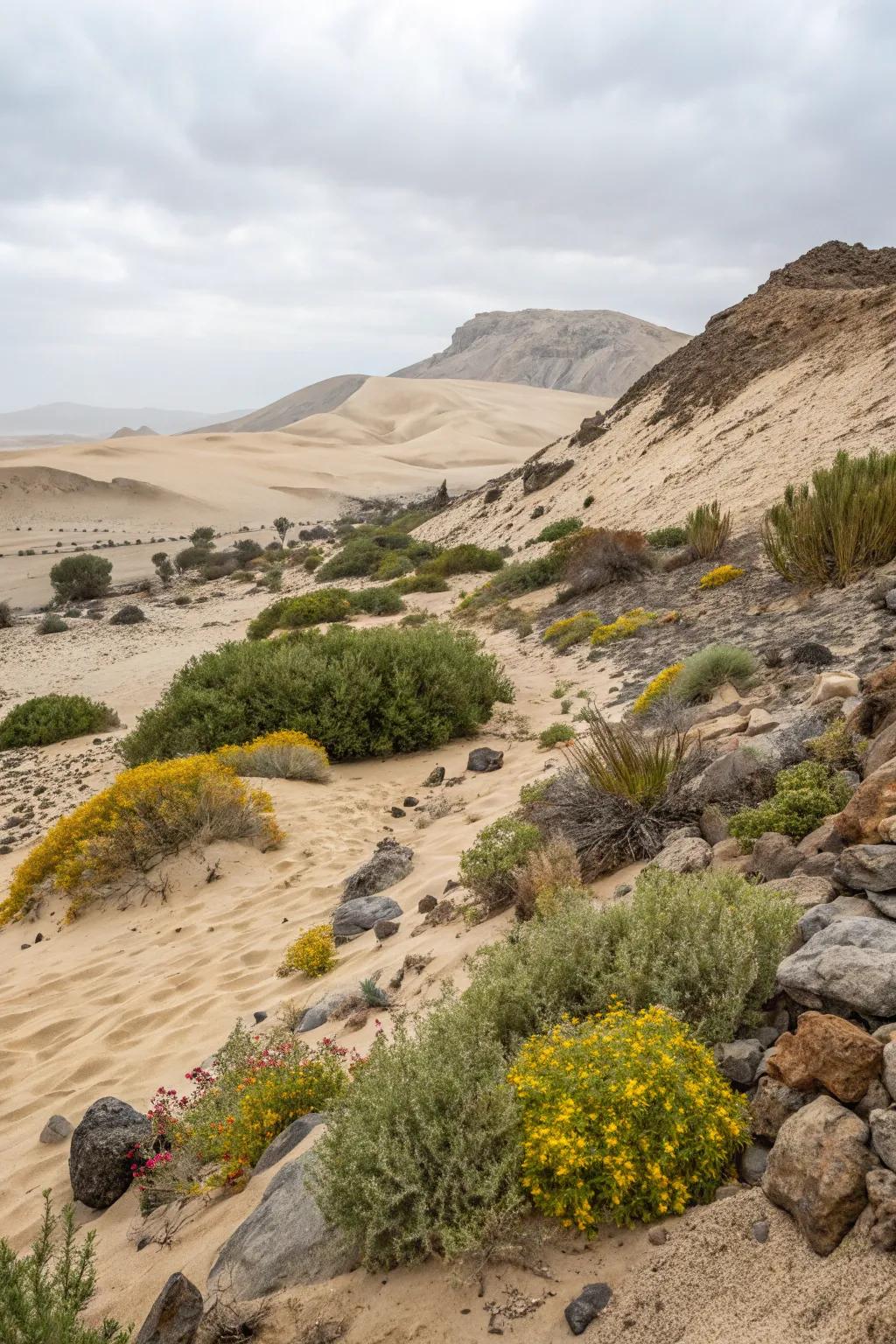
Embrace a limited color palette to enhance cohesion. I find that sticking to neutral tones with occasional pops of color creates a harmonious look.
Useful items to consider:
- Neutral Sand-Colored Gravel: Achieve a cohesive look with sand-colored gravel, enhancing your desert landscape’s natural beauty.
- Desert Succulent Plant Mix: Add pops of color with hardy desert succulents, perfect for low-maintenance landscaping.
- Natural Stone Edging: Define your garden spaces with natural stone edging, complementing desert themes effortlessly.
18. Use of Ornamental Grasses
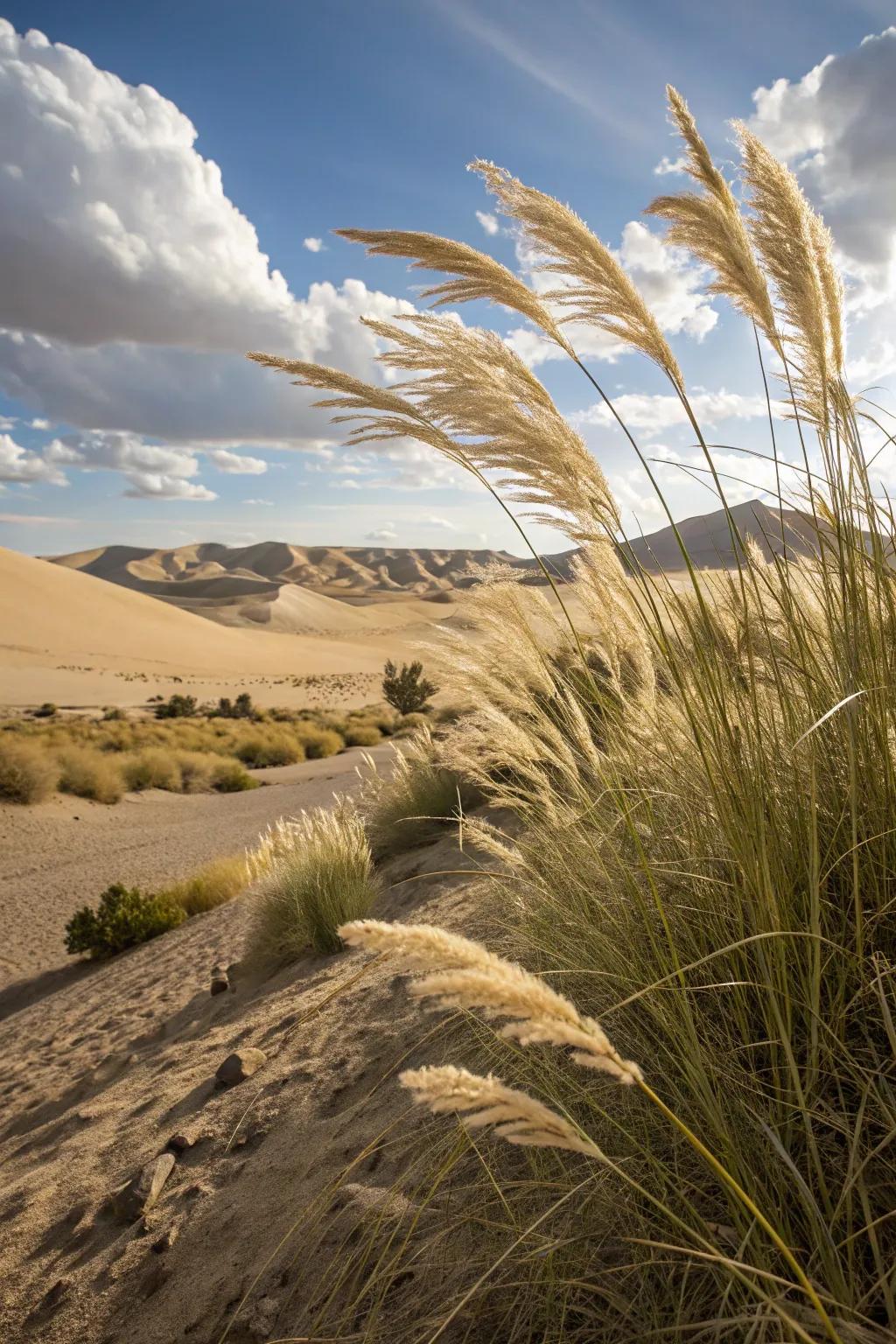
Ornamental grasses add movement and texture. In my garden, they sway gently in the breeze, creating a serene atmosphere.
Check these products out:
- Pampas Grass Seed Pack: Plant pampas grass seeds to create a stunning, breezy effect in your desert garden.
- Decorative Garden Stones: Enhance your ornamental grasses with decorative stones for added texture and visual interest.
- Solar Garden Lights: Illuminate your ornamental grasses beautifully at night with energy-efficient solar garden lights.
